Response time vs. utilization
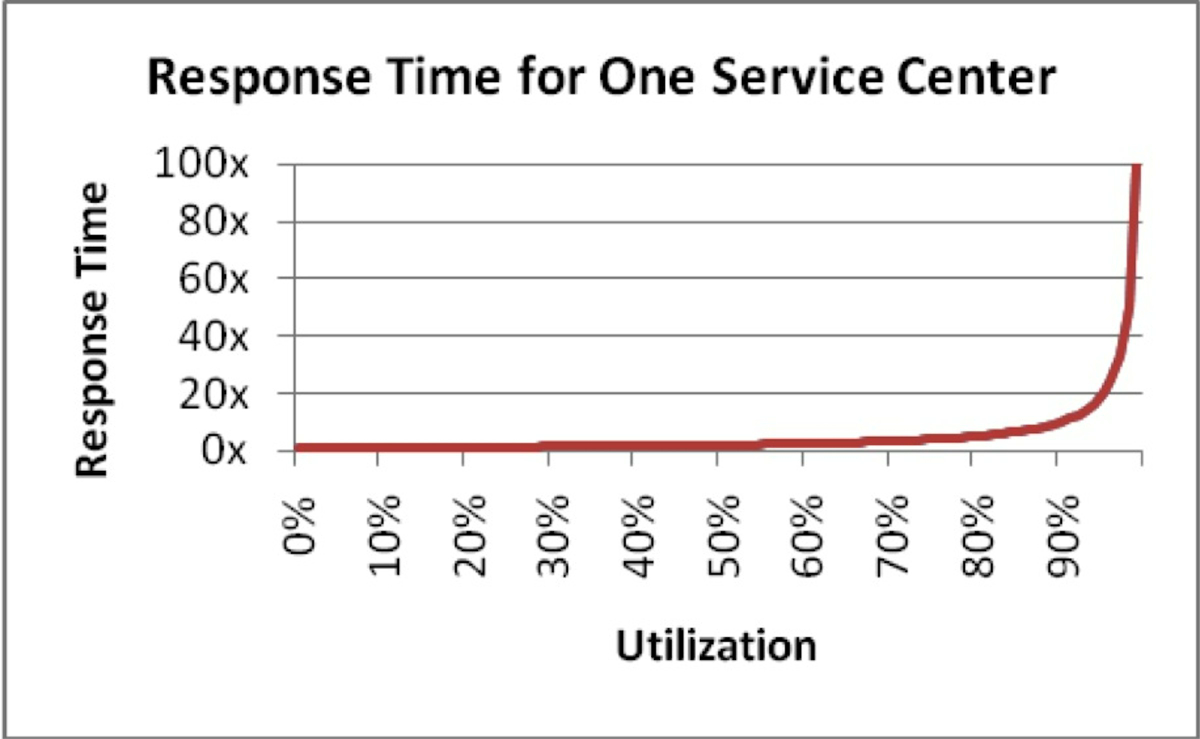
"It's very hard to use the last 15% of anything."
"The slower the service center, the lower the maximum utilization you should plan for at peak load."
- Ref: The Every Computer Performance Book (Wescott 2013)
Response time with multiple service centers
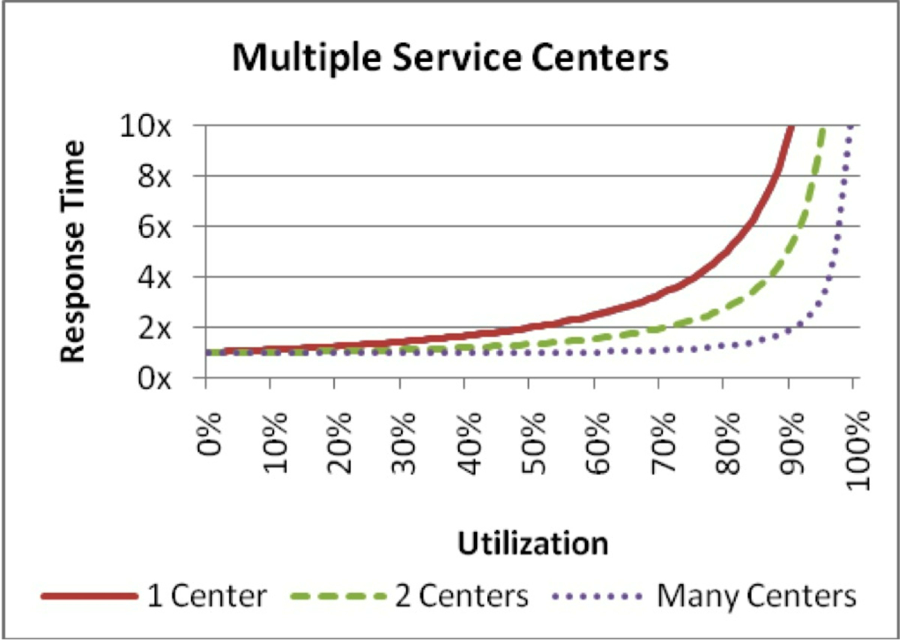
- 1 to 2 tellers: switch from red to dashed green and move left
- Adding parallelism increases throughput, but results in a steeper cliff
"The closer you are to the edge, the higher the price for being wrong."
- Ref: The Every Computer Performance Book (Wescott 2013)
Two queueing systems compared
Which is better for response time? A single fast server or slower, parallel servers?
- Under low load?
- Under high job variability?
Queuing results from variability in either service time or interarrival time!
TCP: Transmission control protocol
- Caveat: gross simplification!
- Two queues: send and receive buffers
- Packet loss: send > recv/arrivals
Backpressure:
- B advertises the receive window (rwnd)
- A adjusts sending to not overwhelm B
- Backpressure is sometimes good and sometimes bad (more on this later!)
- Here it prevents overload (next!)
- Ref: TCP Flow Control (Wikipedia)
Overload
- Queues in practice have a size limit; going over it is "overload"
- When your system overloads, you have to:
- Reject incoming work, e.g. load-shedding, drop packets
- Interrupt ongoing work, e.g. task preemption, suspension
- Change something
- FCFS: time in queue is pretty bad, for everyone
Arrival rate (λ) < service rate (μ): necessary for stability, but not sufficient!
Bufferbloat

- Undesirable side effect of TCP congestion control
- "Bloated" buffers at a bunch of places in your system leads to lots of waiting, which result in latency and lag!
- Lots of super interesting algorithms on how to handle this, e.g. CoDel
Queue size matters: size according to how much you (or your customers) are willing to wait
Ref: Controlling Queue Delay (Nichols 2012)
Ref: bufferbloat.net
FCFS to LCFS
- What if we changed the default queue behavior?
- Trade-off fairness for response time (latency)
- Instead of all customers having a bad time, only some do (and they probably already retried or gave up)
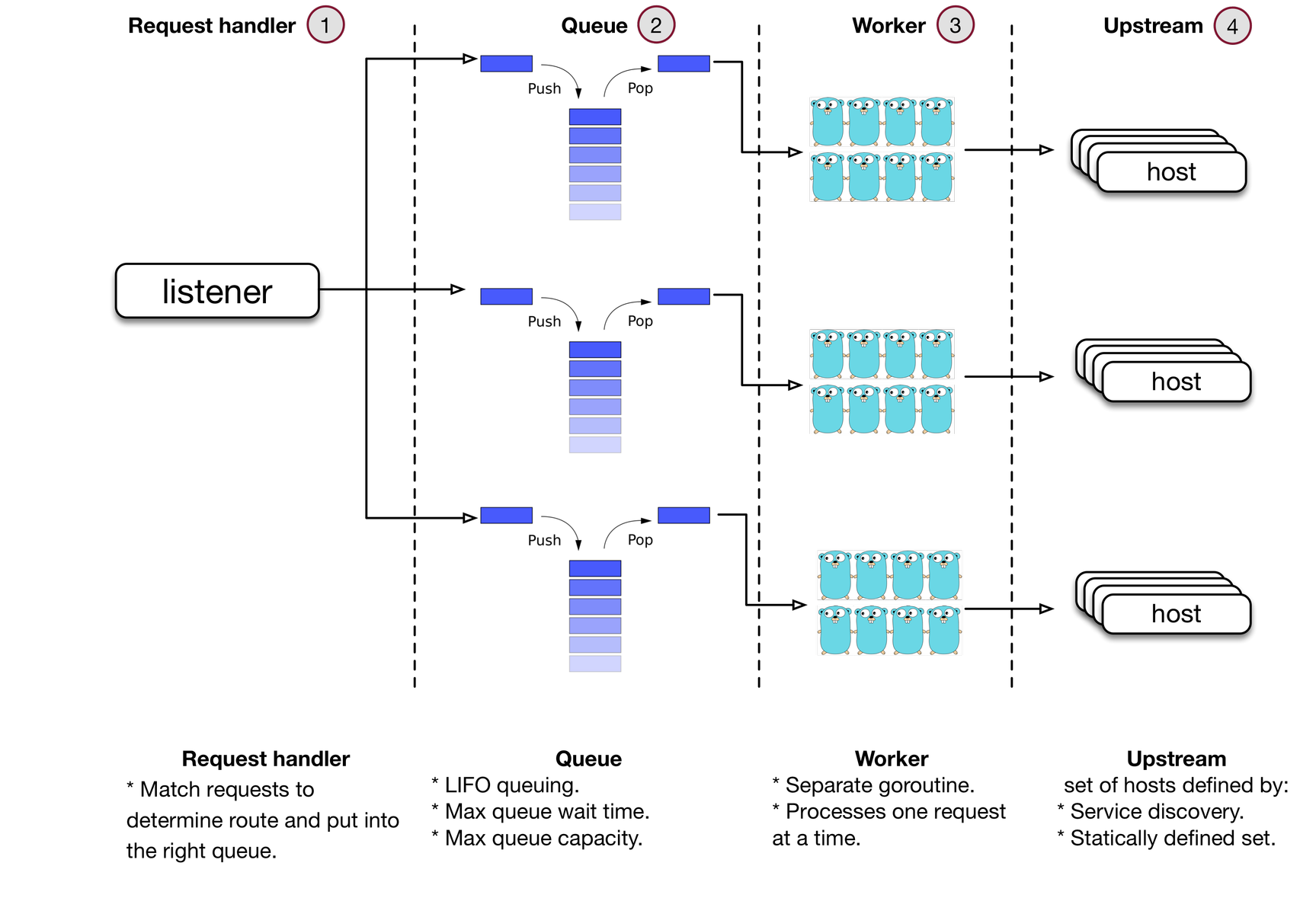
Ref: Meet Bandaid, the Dropbox service proxy (Dropbox 2018)
Convoy effect

- Not to be confused with buffer bloat, but very similar
- Long job causes a backlog of much shorter jobs
- Convoy: things that can go faster being stuck behind things that are slower
- Very real problem in operating system architecture, e.g. older, cooperative scheduling systems would totally hang and crash if only one program did! (Pre-Windows 95)
- Generally fixed with multi-level (priority) queues and task preemption
Revisiting the two systems with preemption
- With preemption, the M/M/1 can simulate and (mostly) match the M/M/4
- Suspending jobs, context-switching: how one CPU core can do many, many things
- Common to use separate priority queues, e.g. multilevel feedback queue (MLFQ)
Central vs. multiple queues
Offline, batch systems
Larger queues
Optimized for throughput
Online, live systems
Critical to load-balancing
Optimized for latency
Kafka

- Messaging queues used to decouple producers from consumers
- Queues managed by replicated brokers
- Distributed system with "levers" and tradeoffs:
- Throughput
- Latency
- Durability
- Availability
Ref: Kafka: a Distributed Messaging System for Log Processing (Kreps 2011)
Performance
Queueing is central to systems performance:
- Latency (response time)
- Throughput
- Blocking
Ref/Example: Don't Block the Event Loop (or the Worker Pool) (node.js docs)
Hidden bottlenecks
- Once you fix a bottleneck (A), a new, hidden one (B) might appear!
- Testing component B in isolation may have surfaced this earlier
- Typically more common in batch systems where you're concerned with throughput
- aka whack-a-mole

Open versus closed
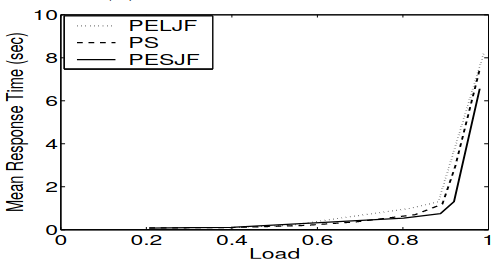
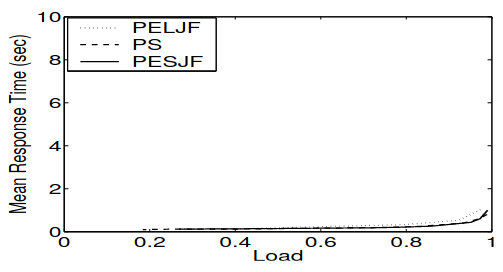
If your load test is a closed-loop load generator, it might be lying to you!
Ref: Open Versus Closed: A Cautionary Tale (Schroeder 2006)
Universal scaling law (USL)
- Concurrency:
- Contention:
- Coherency:
Maybe this also applies to humans and organizations?

Ref: Guerilla Capacity Planning (Gunther 2007)
Scheduling
| Algorithm | Description |
|---|---|
| (RAND) | Randomly choose |
| (RR) | Round robin |
| FCFS | First come, first serve |
| SJF | Shortest job first |
| PLCFS | Preemptive LCFS |
| FB | Foreground-background |
| PSJF | Preemptive SJF |
| SRPT | Shortest remaining processing time |

Ref: Task Assignment with Unknown Duration (Harchol-Balter 2002)
(Don't forget) security!
- Access control: who can send/receive?
- Authenticity: who did the message come from?
- Integrity: did the message change?
- Access control
Queues are just channels. If you want security and privacy, you must secure it end-to-end.
- Ref: End-to-end Arguments in System Design (Saltzer 1984)
Key takeaways
- Queueing is critical to performance, both response time and throughput
- Full (and overflowing) queues are bad for response time
- Lots of unintuitive trade-offs in architecture and algorithm choice
There's so much more. Where to learn more about queueing?
Reading
- Controlling Queue Delay (Nichols 2012)
- Don't Block the Event Loop (or the Worker Pool) (node.js)
- End-to-end Arguments in System Design (Saltzer 1984)
- The Every Computer Performance Book (Wescott 2013)
- Guerilla Capacity Planning (Gunther 2007)
- Kafka: a Distributed Messaging System for Log Processing (Kreps 2011)
- Meet Bandaid, the Dropbox service proxy (Dropbox 2018)
- Open Versus Closed: A Cautionary Tale (Schroeder 2006)
- Performance Modeling and Design of Computer Systems (Harchol-Balter 2013)
- Task Assignment with Unknown Duration (Harchol-Balter 2002)